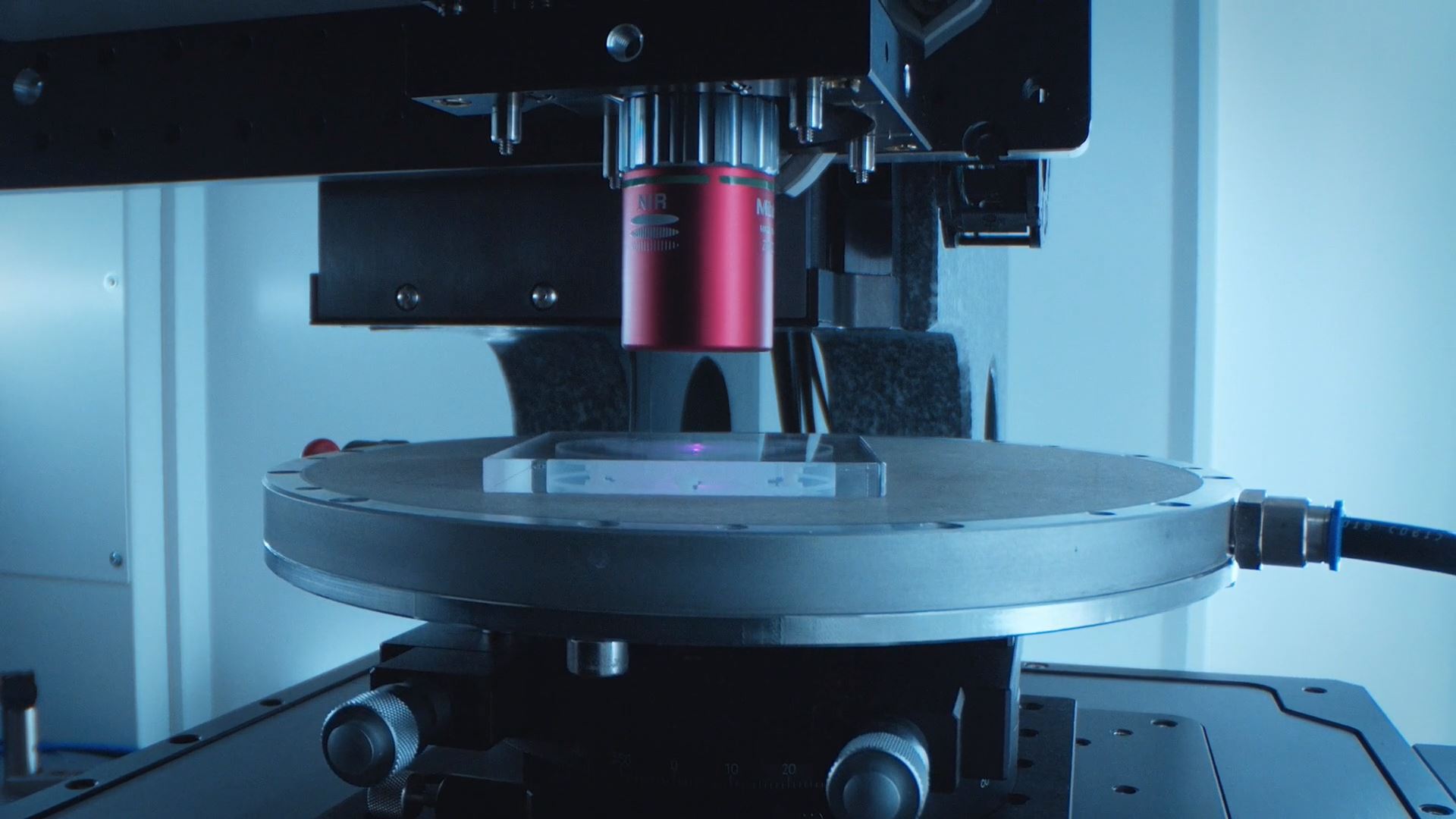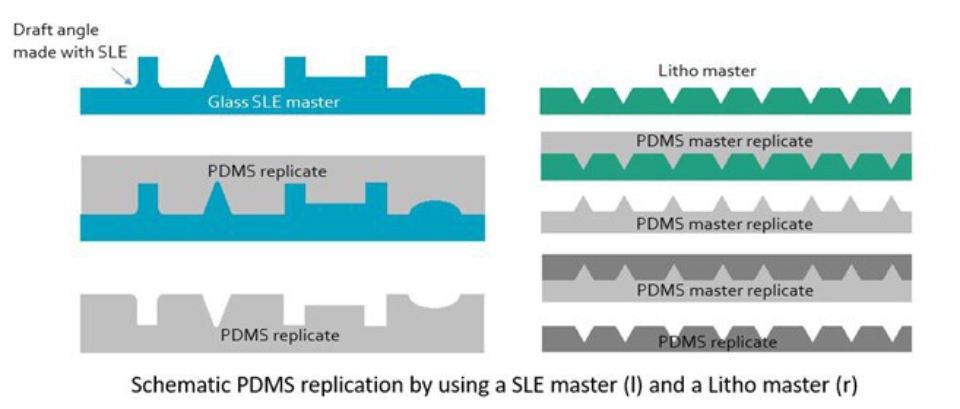New Replica Technology for Micro-Ceramic Components

Conventional PDMS (Polydimethylsiloxane) replication is based on using master molds made by lithography. Through litho, it is possible to make small microstructures that can be replicated by PDMS molding. This is always a two-step PDMS replication process because of the fact that the wafer and structures of the master mold are relatively fragile and are damaged easily. Furthermore, the litho process is limited by design because the design needs to be built by resist layers, exposures, and bake cycles. Besides the wafer being quite fragile also, the structures are not as though as a glass structure would be. After applying PDMS on the master mold wafer, the peeling off of the PDMS can create forces on the wafer that will break it or damage the structures. For this reason, the litho master mold is replicated twice so that the first replicate can be used as a master mold to create multiple replicates.
The schematic example below compares the one-step replicate process, using a glass master mold, with a two-step replicate process, using a litho master. The litho master is a positive replicate of the final PDMS replicate and a glass master is a negative form of the final PDMS replicate. To make stronger master molds, Selective Laser-induced Etching can be used to create structures in glass and eliminate the limitations in design as well as the need for a two-step process.
By using Selective Laser-induced Etching, it is possible to create microstructures in glass, avoiding the need for litho master molds. Thanks to the proven durability of the glass material, it can be used many times, making the need for a double replication step unnecessary. These SLE master molds can hold 3D structures that are built using step sizes 10 times smaller in size than 3D printed structures. This way, it is possible to create very sharp microstructures and even nicely rounded structures or a combination of these. Creating small structures with high aspect ratios and a rounded design toward the bottom makes it possible to create draft angles in replicated PDMS molds. This way, the SLE master has proven its use for the production of PDMS working molds for casting, releasing, and sintering ceramic microstructures down to 200 micrometers in width, with sharp edges down to 1 micrometer. Because of the possibility to add draft angles in the design, the casted ceramic microstructures are much more ridged, preventing easy breakage.
LouwersHanique has proven that the glass master mold can be replicated very precisely in PDMS, and after that, it is possible to use the PDMS as a mold for casting ceramic micro products. Besides producing the glass master mold, also a process is set up to produce exact PDMS replicates. PDMS replicates can be used as microfluidic devices and for creating micro precision ceramics components such as MEMS, medical implants, or electronics.
The main advantages of using SLE glass master molds are listed below:
Want to know more about the possibilities of SLE or quartz glass micro molds?
Read more about our laser processing techniques or contact us directly so we can help you!
Nadja Schuh is our R&D engineer and the author of this blog article. She has more than 15 years of experience in materials and cleanliness within the high tech industry. Nadja has a DfSS Black Belt and is focused on high quality and continuous improvement. As an engineer at LouwersHanique, she is working with glass and ceramics in high tech applications on a daily basis. She has found these materials especially interesting ever since she became familiar with them when attending an evening course during her chemical engineering studies.

